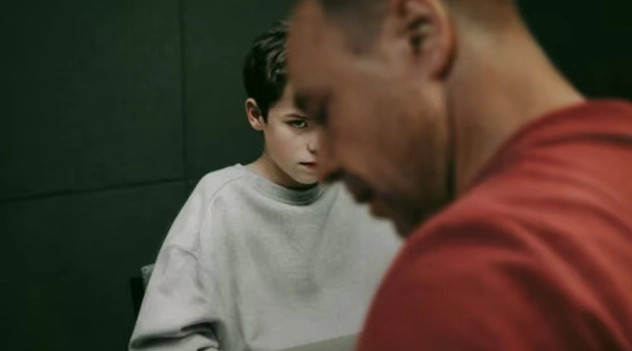
Netflix’s latest crime drama, Adolescence, has ignited a debate everywhere, from social media threads to our drawing rooms. The series, at its core, deals with the disturbing world of online radicalisation and toxic masculinity.
It follows the story of 13-year-old Jamie Miller, a seemingly ordinary boy who becomes engaged in the dark undercurrents of the manosphere and incel culture. When Jamie is accused of murdering a female classmate, the miniseries shows how a mix of online influences, peer alienation and societal neglect can create a dangerous mix of anger and extremism in youngsters.
As the series impresses audiences, it also provokes vital conversations about the impact of online communities on young men. The Guardian has hailed it as “one of the most urgent portrayals of masculinity in the digital age," while TtheBBC notes that the series’ unsettling realism has resonated with parents, educators and policymakers alike.
With its starkly authentic storytelling and phenomenal acting, Adolescence has become more than just a Netflix drama. It is a cultural moment that demands attention. But why has it sparked such widespread discourse?
Exposure to Toxic Digital Cultures
One of the central reasons why Adolescence is grabbing headlines is its unfiltered portrayal of the manosphere – a vast network of online communities that promote hyper-masculinity and misogyny. Jamie, after facing bullying and rejection, stumbles upon forums that reinforce the idea that women are to blame for his struggles. These forums, often frequented by self-identified “incels" (involuntary celibates), foster a growing resentment towards women and mainstream society.
A CNN report explains how such communities create echo chambers, reinforcing harmful worldviews through coded language and pseudo-scientific arguments. The series effectively dramatises this process, showing how easily young, impressionable boys can be radicalised online. The realism of this portrayal has alarmed viewers, many of whom are only now becoming aware of the prevalence of these digital subcultures.
Real-Life Relevance and Statistical Backing
Adolescence resonates deeply because it mirrors real-world concerns. According to The Standard, knife crime among young people in the UK has surged in recent years, with many of these cases linked to radicalisation through online spaces. The show draws from these disturbing trends, making its narrative all the more compelling and urgent.
Moreover, a Harper’s Bazaar review notes that Adolescence is not just about fictional events – it is a stark reflection of the dangers that many teenagers face in the digital era. The show presents an opportunity for audiences to understand the real-life consequences of unchecked online extremism.
Controversial Influence of Figures Like Andrew Tate
The show also touches on the role of controversial internet figures, such as Andrew Tate, whose hyper-masculine and misogynistic rhetoric has gained immense popularity among young men. Though not directly named, the influence of such figures is clear in Jamie’s journey. According to a BBC report, Tate’s content has been widely consumed by young boys, reinforcing harmful gender stereotypes and fostering a sense of entitlement and victimhood. This connection has made Adolescence particularly polarizing, with some defending these figures as merely expressing “unfiltered masculinity" while others argue that their influence is dangerously toxic.
Unique Storytelling and Production Style
Beyond its themes, Adolescence is also being praised for its groundbreaking cinematography. The show employs a single-shot filming technique, which The Independent describes as “an immersive storytelling choice that pulls the audience into Jamie’s world with a suffocating intensity." This unique style has fueled discussions among cinephiles and critics alike, adding another reason to the series’ cultural significance.
Educational and Policy Implications
The influence of Adolescence has reached beyond entertainment and into the realm of policymaking. British Prime Minister Keir Starmer has advocated for the series to be shown in schools, stating that it “offers a necessary warning about the dangers lurking in the digital age." His endorsement has sparked debates about whether media can be used as an educational tool to counteract online radicalisation. According to ABC News, lawmakers are now discussing stricter regulations on social media algorithms that push extremist content. This real-world policy response is a testament to the show’s impact and is why it continues to be a major talking point.
Parent and Educator Reactions
The show has resonated deeply with parents and educators, many of whom have taken to social media to share their concerns. BBC reports that some schools have even begun incorporating discussions about Adolescence into their curricula, using it as a tool to help students recognise the warning signs of radicalisation.
Experts, including child psychologists and digital safety advocates, have praised the show for encouraging difficult but necessary conversations. By bringing these issues into mainstream discourse, Adolescence is helping parents and teachers understand the challenges young boys face in navigating online spaces.
By shedding light on the incel subculture, the manosphere, toxic masculinity, the role of adults and the impact of unchecked online extremism, Adolescence has ignited conversations that extend far beyond the realm of entertainment.